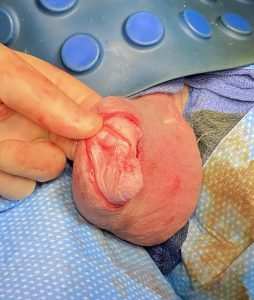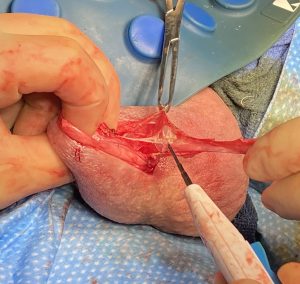Testicular implants are the smallest aesthetic body implant. Despite its small size it shares several features to that of another body implant that is far more commonly used, breast implants. The similarities may not seem obvious and the implant compositions are different. (testicle implants are soft solid implants while breast implants are soft gel-filled implants) But what they share is that both are meant to be compressible implants that permit and have to have mobility. (soft and supple) In fact testicle implants have to have even greater mobility given that they are in a containment sac which allows them to hang low.
But with any freely mobile implant it is necessary to have the body develop a thin surrounding scar capsule. With a thin capsule the implant remains soft and compressible. But capsular pathology is well known to occur in breast implants in which the capsule becomes thick which results in a firm feeling implant that is immobile, a well known phenomenon known as capsular contracture. While not commonly seen or reported in testicle implants there is no reason why it could not occur.
While a firm or hard testicle implant is most commonly due to the implant, composition (saline-filled implant or old style solid silicone implants), there are instances where not is due to the surrounding capsule. While testicular implant contracture has been rarely reported, how to treat it is even more rarely known.


In my experience the most common reason for a testicle implant capsulectomy is when doing implant replacement, particularly when a much larger implant is being placed. Pocket space needs to be created to accommodate the increased implant size. Not doing so risks having a desired larger implant size but one that feels firm with inadequate hang.
Dr. Barry Eppley
World-Renowned Plastic Surgeon




